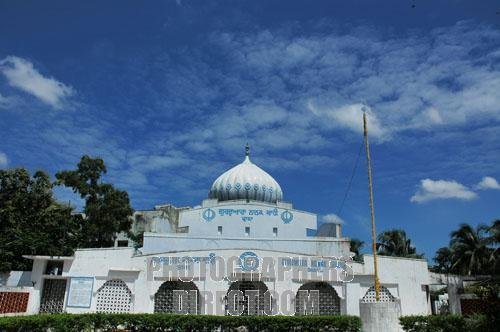Nov 30 2010, Amrtisar: The first-ever large Sikh representative group or jatha to Bangladesh was flagged off on Monday. The jatha comprising 58 members, including women, will visit various gurdwaras in Bangladesh and return home on December 9.
The jatha was flagged off by Akal Takht Jathedar Giani Gurbachan Singh and Shiromani Gurdwara Parbandhak Committee (SGPC) head Jathedar Avtar Singh Makkar. Makkar said jathas will now be sent regularly to Bangladesh. “Earlier, permissions were granted to only granthis (Sikh religious workers) but now the Bangladesh government has agreed to give permission for this large jatha. We will soon meet the Bangladesh High Commissioner in Delhi for granting visas to more Sikh devotees”, he said.
Makkar also offered to build a serai (hospice) at Gurdwara Chittagong near Dhaka. “Various gurdwaras in Bangladesh, built in the memory of visits by Guru Nanak and related to various Sikh historic dates, need repair and we are ready to take on the kar sewa (volunteer service). We will take up this issue with Bangladesh’s High Commission and seek the Government of India’s help, too,” said Makkar.
|
GURDWARA NANAK SHAHI Nestled on the Dhaka University campus just besides the Arts Faculty building is the Gurdwara Nanak Shahi, a place of worship for Sikhs in the city. The quiet, austere place comes alive on the days of Sikh festivals as well as on Fridays when Sikhs, mostly Indian Sikhs serving in Bangladesh or engaged in business, gather to hear devotional hymns by Raagis and readings from the Guru Granth Sahib, the Sikh holy book and rendering of its meaning by Granthis. Only baptised Sikhs, who are bound to wear the five Ks, can read out from and render the meaning of the Guru Granth Saheb. The programs end with distribution of free food from the langar.
Guru Nanak (1469 – 1538), founder of Sikh faith, chose then secluded spot to set up this Gurdwara that now bears his name, besides a pond and a garden. From here he travelled to Chittagong and then to what is now Myanmar to preach the Sikh faith. Although the exact details of his itinerary are not available, he is widely acknowledged to have made four major journeys, spanning thousands of kilometres, and this journey was one of those four. Guru Nanak stressed that a Sikh should balance work, worship, and charity, and should defend the rights of all creatures, and in particular, fellow human beings. They are encouraged to have a optimistic view of life. Sikh teachings also stress the concept of sharing – through the distribution of free food at Sikh gurdwaras (langar), giving charitable donations, and working for the good of the community and others (seva). The text of Guru Granth Sahib was decreed by Guru Gobind Singh, the tenth and the last guru. A week-long celebration marking three hundred years of his death was observed recently. The bulk of the scripture is classified into raags,. There are 31 main raags within the Guru Granth Sahib. The text further comprises over 5000 sabads, or hymns, which are poetically constructed and set to classical form of music rendition, can be set to predetermined musical tal, or rhythmic beats. The Granth begins with the Mool Mantra, a verse created by Nanak. Celebrations or commemorations – Gurpurabs – are based on the lives of the Sikh gurus. Vaisakhi normally occurs on April 13 and marks the beginning of the new spring year and the end of the harvest. Sikhs celebrate it because on Vaisakhi in 1699, the tenth guru, Gobind Singh, began the Khalsa baptismal tradition. Diwali (also known as bandi chor divas) celebrates Hargobind’s release from the Gwalior Fort, where he was imprisoned by Emperor Jahangir. Hola Mohalla occurs the day after Holi. It is when they gather and display their fighting skills. Baptised Sikhs are bound to wear the Five Ks (in Punjabi known as pañj kakke or pañj kakar), or articles of faith, at all times. The tenth guru, Gobind Singh, ordered these Five Ks to be worn so that a Sikh could actively use them to make a difference to their own and to others’ spirituality. The five items are: kes (uncut hair), kangha (small comb), karra (circular heavy metal bracelet), kirpan (ceremonial short sword), and kacchera (special undergarment). The Five Ks have both practical and symbolic purposes. |


